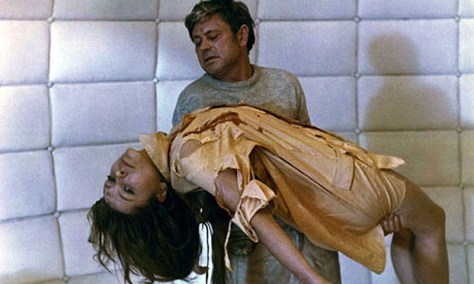
There is little new, if anything, to say about Andrei Tarkovsky’s haunting science fiction masterpiece. As deep, mesmerising and involving as the ocean from which the concept of Stanislaw Lem’s novel emanates, the film remains both poignant and peerless. Now a recent reissue of Eduard Artemyev’s original soundtrack on Russian imprint Mirumir has brought this eerie and unsettling score back into the frame. Solaris has spawned various musical interpretations, from Artemyev’s original and re-recorded version, to the Cliff Martinez score of Steven Soderberg’s reimagining, and the Ben Frost/Daniel Bjarnason rescore; almost all are remarkably strong.
Cold and claustrophobic, yet driven by palpable soul and feeling, Tarkovsky’s film has a clear understanding and appreciation for the beating heart of Lem’s novel. The theme of human nature that is so integral is reflected in the soundtrack’s centerpiece, the melancholy keys of Artemyev’s synthesized version of Bach’s Ich ruf’ zu dir, Herr Jesu Christ (BWV 639). Played during the opening credits, references to the Earth and the elegiac and iconic waltz in weightlessness, it becomes an ode to humanity, much like in other Tarkovsy films that use Bach, of whom he is a renowned admirer: ‘there are composers and then there’s Bach’.
Outside of Bach, the rest of the soundtrack is concerned with spectral drones and abstract sonics, but it still wrestles with the relationship between humanity, nature and the cold environment of space. Artemyev was challenged with creating sounds that come from nowhere and disappear into nothingness. Echoes and reverberations of familiar sounds are distinguishable among the electronic – bells, animals and choral music appear against the circuit boards, spherical corridors and the pulsing surface of the planet. The non-immediate influence of familiar natural sounds against the mechanical drones astutely reflects Gibarian’s invention, attaching ‘strips of paper to the air vents… At night it sounds like the rustling of leaves.’
One of the most notable aspects of the score is the incredibly sparing use of it in the film. We hear vignettes littered throughout, while the space in between reflects the environment, and enhances the emotion of the characters and the effects of the sounds when they are used. The first third of the film is mostly concerned with the sounds of nature and the silence that surrounds them, with Kelvin’s spaceflight and glimpse of the space station being the first introduction to the score.
Tarkovsky proclaimed that during his career he wished to make a film entirely without music; to him, film should be a capable language unto itself, with music filling the gaps where this language faltered. This is evident in the sparing and subtle use of sound in Solaris; but when listened to as a standalone record, Artemyev’s score is as poignant today as it was revolutionary when it was produced. Like a Soviet precursor to Aphex Twin’s ‘Selected Ambient Works II’, the electronics were composed on the Soviet ANS synthesiser, a complex photoelectronic instrument that uses a glass plate disc system. The synthesiser was destroyed shortly after, and Artemyev’s soundtrack stands as a timeless representation of the instrument, a recreation of which now stands in the Glinka State Central Museum of Musical Culture in Moscow.
Alex Glen






